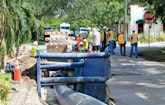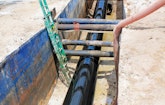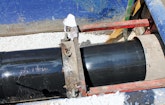
An entry pit on Murphy Pipeline Contractors’ Fort Lauderdale, Florida, project shows a DD-440T directional drill and P-600 mud pumps from American Augers. Murphy installed 8,600 feet of new pipe on the project, using primarily directional drilling. (Photos courtesy of Murphy Pipeline Contractors)
Faced with a public works emergency caused by a series of disastrous breaks in aging, ductile iron sewer force mains — including one line that handles about a third of the city’s sewage — officials in Fort Lauderdale, Florida, found themselves in crisis mode in mid-2017.
To...









